A Better World Is Possible: Building Arab/Jewish Solidarity at Hand in Hand Schools
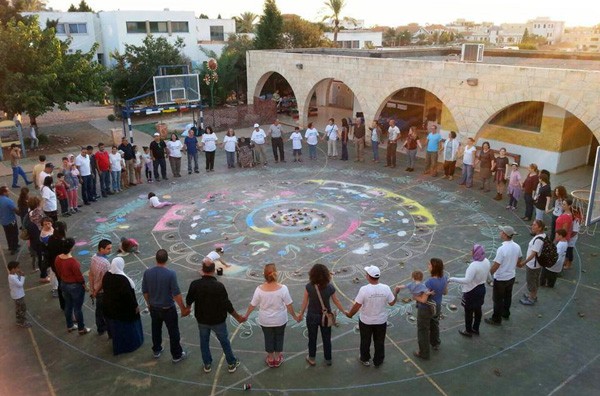
Photo: Habd in Hand Schools
By Art and Maura Keene
Most disheartening in the ongoing war in Gaza and Israel is the speed with which people took sides in the conflict — justifying the violence by their side because of the inhuman actions of the other. Given the ongoing war and the cheerleading on both sides for the destruction of the other, it would appear that the well-worn belief that the enmity between Jew and Arab is so deep that co-existence is impossible. And yet, across the region, as well as in the United States, there are plentiful instances of not just coexistence among Arabs and Jews but the building of solidarity. Such examples remind us that there are accessible alternatives to racism and hatred, to war and genocide, and that a better world IS possible. This is one such story.
Preface
Our family spent the years 1986 – 2004 working seasonally in Israel/Palestine, supporting Art’s research on Israel’s system of collective farms (kibbutzim). We returned in 2006 (our last visit to the region) to participate in a peace study tour organized by Faculty for Israeli and Palestinian Peace. Our group, consisting mostly of college professors and their students, spent two weeks traveling across the region with the bulk of our time spent in the occupied territories. We met with people who lived under the occupation and people who enforced the occupation. We met with members of the Israeli and Palestinian governments. We met with lawyers and organizers, peace activists and freedom fighters, educators and journalists. We heard heartbreaking personal stories of suffering under the oppression of occupation, and heartening stories of resistance and solidarity. And everywhere we went we heard aspirations for a better world. But even after spending 18 years working in the region, we were shocked and moved and transformed by experiencing the occupation up close and from hearing first hand from those who lived it daily and those who struggled to end it. One of our most inspiring experiences was to spend an afternoon at the Hand in Hand school in Wadi Ara.
In a country where not just education, but daily life is rigidly segregated, Hand in Hand schools bring together Israeli Jewish and Israeli Arab children to learn together, not just the typical subjects one studies in school, but also to learn about each other’s culture and history. Together with their parents and teachers, they create a meaningful community based in mutual respect. Each Hand in Hand classroom has a Jewish teacher and an Arab teacher. Instruction is in both Arabic and Hebrew, and the students become proficient in both languages. Culture and history of both peoples are studied and celebrated. Children and their teachers and parents, despite living in separate (Jewish and Arab) segregated towns and villages, develop deep friendships and a palpable passion for their school and its mission, in spite of the disapproval and hostility that they may experience from their friends and neighbors within their own segregated community because they participate in this multi-cultural experiment.
When we visited the Wadi Ara school in 2006 there were only two Hand in Hand schools in Israel, the one we visited and another in Jerusalem with a total of 50 students between them. Today there are seven Hand in Hand public schools with over 3,000 students learning to build solidarity amid the turmoil.
In the face of the current tragic war, the Hand in Hand community posted messages on Instagram, like those below — testifying about their pain from the rage and hatred that is sweeping their country and their commitment to see the humanity in each other and to build a better world.
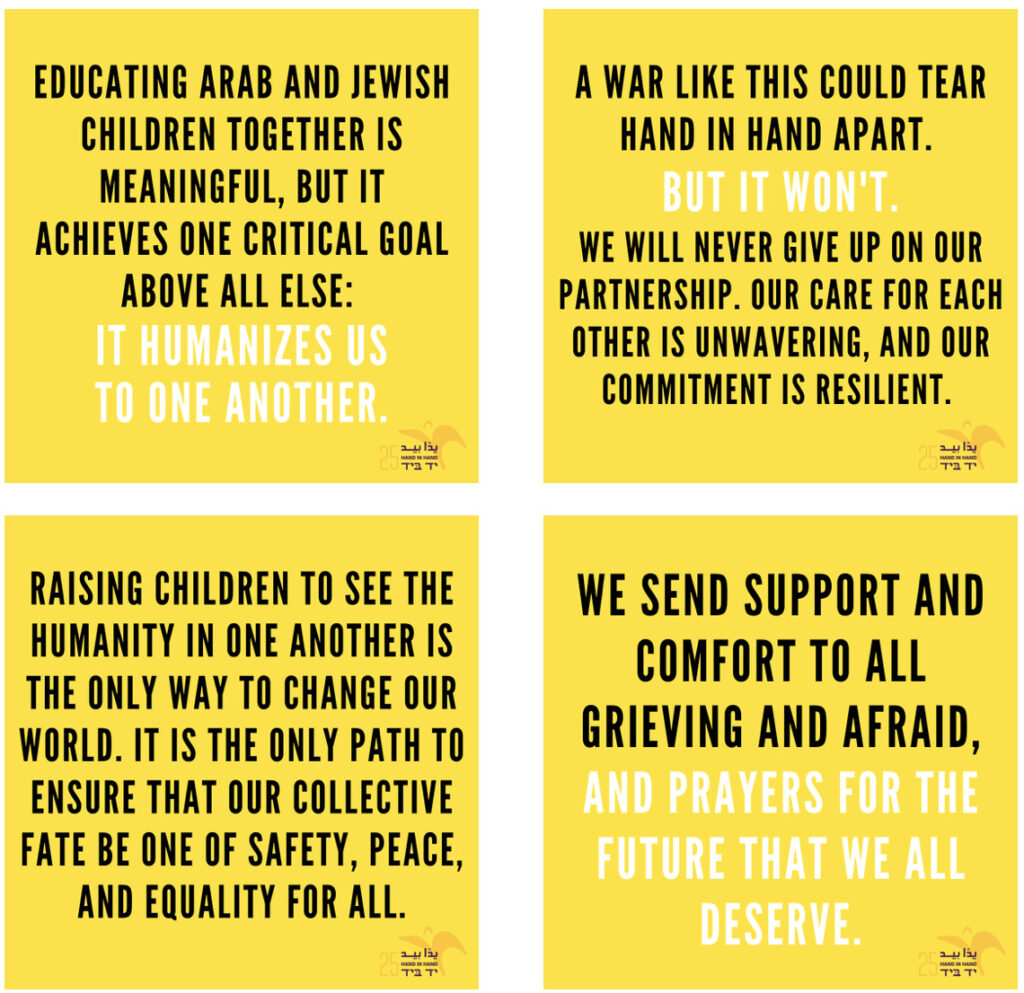
The Hand in Hand Story
Here is the story that the Hand in Hand community tells about itself on its own web page.
Hand in Hand’s growing network of integrated, bilingual, multicultural schools offer a transformational alternative to the status quo in Israel. Over 3,000 Jewish and Arab students, ages 3-18, study in our seven schools across Israel. Our students study in both Hebrew and Arabic in a classroom taught by two teachers—one Arab, and one Jewish. They become acquainted with the culture, language, religion, and customs of all their peers. They acquire critical-thinking skills, and engage in dialogue, broaching even the most difficult topics. Below are some of the key components of our educational philosophy:
Bilingualism, Multiculturalism and Identity Education
Starting in preschool, each of our classrooms is taught by two co-teachers—one Jewish and one Arab—who both teach in their mother tongue. Our students’ ability to speak the language of ‘the other’ is essential to engendering a sense of comfort among peers, in spite of cultural differences. It allows children to overcome their fear of ‘the other,’ and be open to friendship instead.
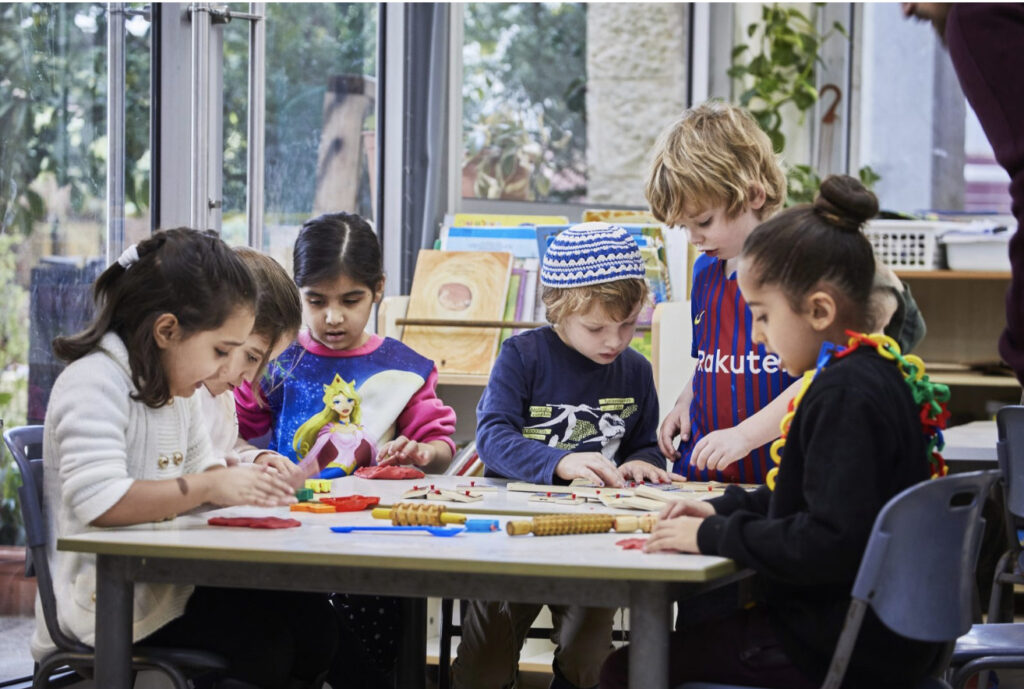
Our schools follow a shared calendar, immersing students in stories, songs, symbols and traditions of Muslim, Jewish, and Christian holidays. We strengthen each student’s identity, helping them to feel pride and excitement in their heritage, while also communicating respect and knowledge about the other.
Values-Based Education
Hand in Hand schools emphasize humanistic values including equality, human dignity, mutual respect, and empathy towards others. Our specially designed multicultural curricula in core subjects such as literature, history, civics, art, film, and religion, expose our students to multiple perspectives and teach them critical thinking skills. The educational messages about those who are different from oneself begin in preschool, and enable our students to become adults who view diversity not as a threat, but as an enriching experience.
Teacher’s Training
The challenging social and pedagogical aspects of the bilingual and integrated experience at Hand in Hand schools require that each staff member receives pedagogic support, supervision, and training to effectively implement Hand in Hand’s bilingual and multicultural model. Read more about Hand in Hand’s innovative teacher training here.
Dialogue
Dialogue serves as a platform for strengthening feelings of partnership, trust, and solidarity not only between students and families, but among our staff as well. This is especially important for our Jewish and Arab teachers who must work together daily, even during times of ongoing violence and conflict. Read more about Hand in Hand’s dialogue groups here.
Hand in Hand is a leader and an expert in the field of bilingual, multicultural and values-based education. As such, we are committed to growing our Shared Society Educational Resource Center, through which we hope to share knowledge with local municipalities, government officials, and other educators in order to encourage system-wide change. Read more about Hand in Hand’s Educational Resource Center here.
Hand in Hand’s community members are trailblazers, committed to shared living in the face of conflict and societal rifts. They are a growing constituency of thousands of Arabs and Jews, women and men, children and adults. TheyThe embody our values—equality, pluralism, multiculturalism—every day, and their collective force is building a microcosm of a shared society in Israel. Our community members are resilient partners in educating our children toward genuine peace. They inspire us, and serve as an example for what is possible in this country.
“
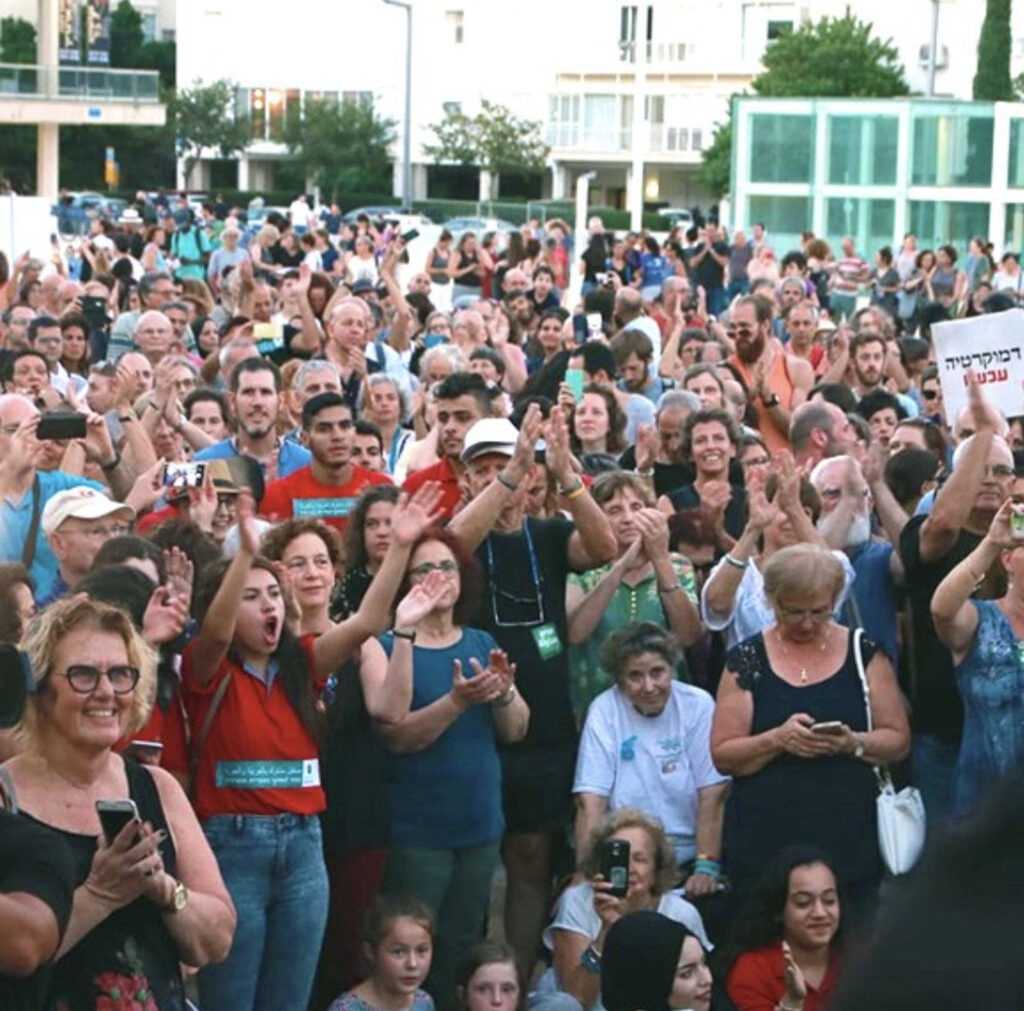
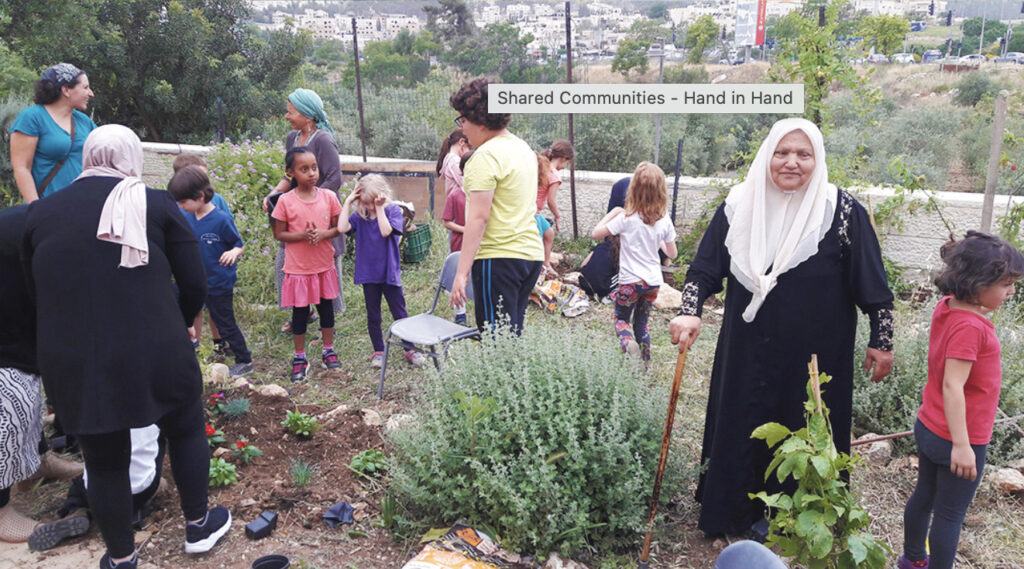
Community
Ushering in a better future requires that we create a true and equal community. While Hand in Hand is investing in education to build a better future, the burden of affecting real social change in Israel cannot rest on the shoulders of children alone. Each community member is a Hand in Hand ambassador. They stand up for their values and spread our message further in their own families, workplaces, and communities across the country.
Coming together in a conflict zone is not easy, and so we provide programming throughout the year to cultivate friendships, mutual trust, and appreciation. It is crucial that our community members know that we remain steadfast in our commitment to shared living, no matter the circumstances. Throughout the year, our communities enjoy parent-child activities, civic engagement, lectures and workshops, countrywide family gatherings, leadership seminars, facilitated dialogue sessions, language classes, shared holiday celebrations, cultural text study, and the upkeep of community gardens.
Read more about Hand in Hand’s Dialogue program here.
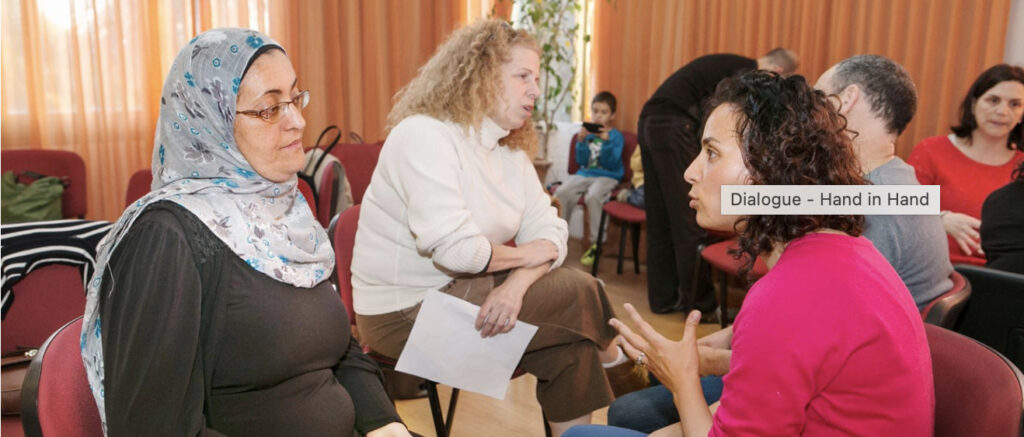
Likewise, a dedicated committee of graduate volunteers helps manage Hand in Hand’s vibrant, growing community of young alumni.
Click here to read more about our alumni community.
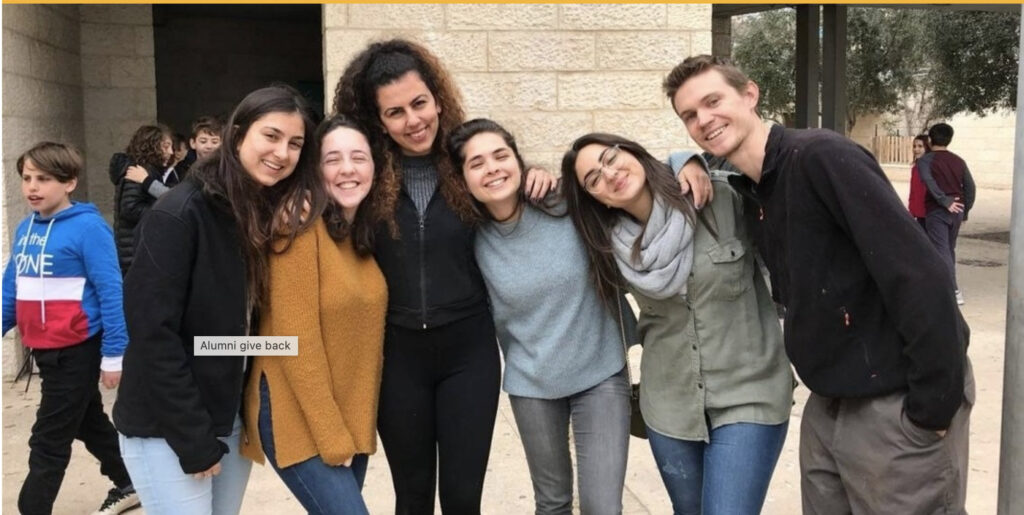
Whenever possible, Hand in Hand’s communities come together for countrywide events, including festival celebrations, movie screenings, and staff reunions. Our families and staff form a dedicated, nationwide community of activists. Hand in Hand’s community members are also social activists, and stand up for equality and inclusion in Israel.
For example, during the violent events of May 2021, Hand in Hand helped gather thousands in Jerusalem, the Galilee, Jaffa, Kfar Saba, Haifa, and Kafr Qasim to protest the escalating violence and broadcast a clear message: “Safety and equality for all.” During those frightening weeks, community members expressed an urgent need to connect and break out of the growing fear and suspicion inflaming society around us, even as the events coincided with both Jewish and Muslim holidays. Our community members effectively turned toward one another at a moment of crisis, when it may have felt natural to turn apart. Groups in Haifa, the Galilee, Jaffa, and Kfar Saba, as well as alumni, came together to share very challenging and complex feelings, while also emphasizing the importance of a recommitment to shared society during such difficult times.
Students
Israeli children go to separate schools and rarely interact with each other, contributing to deep-rooted divisions and intergenerational hatred. In this society, Hand in Hand students are unique. In 2022-23, over3,000 Arab and Jewish students from ages 3-18 are learning together in seven bilingual, multicultural schools. They study together in a values-infused environment where equality, tolerance and togetherness are the norm – day after day, and year after year. They are equipped with a strong sense of mutual respect and are empowered to go out and change society.
Hand in Hand’s award-winning schools are in high demand. With requests to build new Hand in Hand schools in over 10 locations, we know that growing numbers of Israelis across the country are seeking an alternative for their children. We plan to continue our growth until there is a Hand in Hand school in every mixed region in Israel, offering this alternative way of life and learning to thousands more across the country.
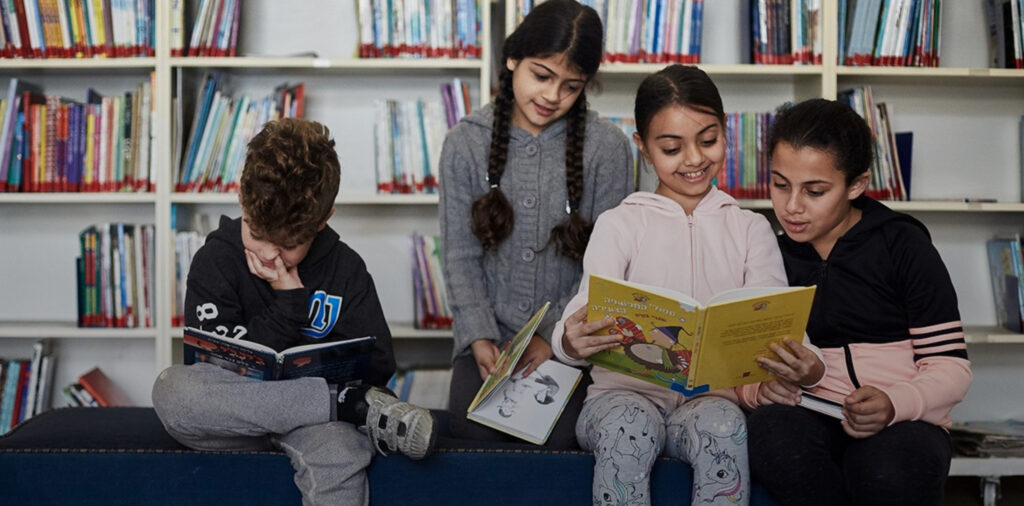
Alumni
Over 700 incredible young women and men have graduated from Handgraduated Hand in Hand schools. Our students graduate with a passionate commitment to social action alongside a finely honed sense of empathy, a nuanced understanding of society, and the uncommon experience of having already lived the values of mutual respect and equality. They are our best ambassadors for shared living, and are equipped to advance their beliefs in the world around them, bringing change to their universities, service institutions, and workplaceswork places.
Families
Behind every Hand in Hand student is a family making the remarkable choice to educate their children in a mixed Jewish-Arab school. The collective force of thousands of these families, living their values of equality despite the conflict, creates a new way of life in Israel. This new way of life plays out in their homes, with their friends, family, local communities, and places of work. Parents at the school are politicians, judges, lawyers, policy makers, academics, artists, and much more. And they take the transformation they experience at Hand in Hand wherever they go, changing the norms in the world around them to be more inclusive and equal.
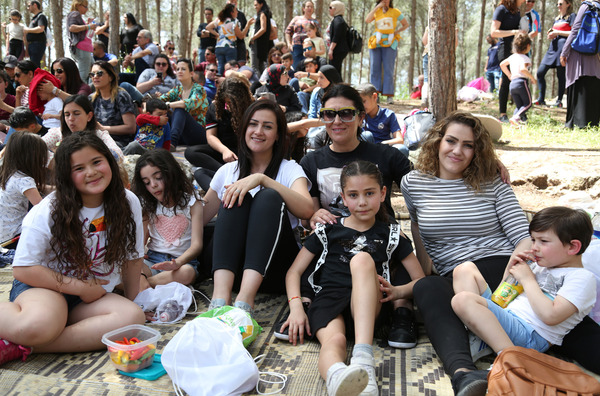
We cannot rest all of our hopes for the future on the shoulders of our children. We have established flourishing adult communities around each of our schools that live, learn, and celebrate together throughout the year. Hand in Hand’s communities are having an outsize effect on the cities where we operate, and the country as a whole. In our host cities throughout Israel, bilingual children’s programming has spread to other institutions like libraries and day care centers. Community centers are partnering with us to create programming for integrated Arab-Jewish audiences. Hand in Hand communities are active together – bringing the voice of equality to local neighborhoods and all of Israeli society. These communities are making change today, so they can build a more equal society for the next generation.
Government
Hand in Hand staff and community members work closely with city administrators and Ministry of Education officials in every location where we open and operate schools. Our staff members present the Hand in Hand story at professional conferences countrywide and beyond, and advise municipalities on how to bring values of pluralism, tolerance and Jewish-Arab understanding into other schools in the city. Many public officials are impacted by their engagement with Hand in Hand, and have gone on to enact policies like offering forms in two languages and encouraging local businesses to offer Arabic translations. Each year this impact widens, furthering new developments toward greater inclusion in society.
Learn More About Hand in Hand School here.
A Better World Is Possible is an occasional feature of the Amherst Indy that offers snapshots of creative undertakings, community experiments, innovative municipal projects, and excursions of the imagination that suggest possible interventions for the sundry challenges we face in our communities and as a species. This feature complements our occasional column by Boone Shear, who writes Becoming Human.
Have you seen creative approaches to community problems or examples of things that other communities do to make life better for their residents that you think we should be talking about? Send your observations/suggestions to amherstindy@gmail.com. See previous posts here.

Thank you, this was a beautiful piece.